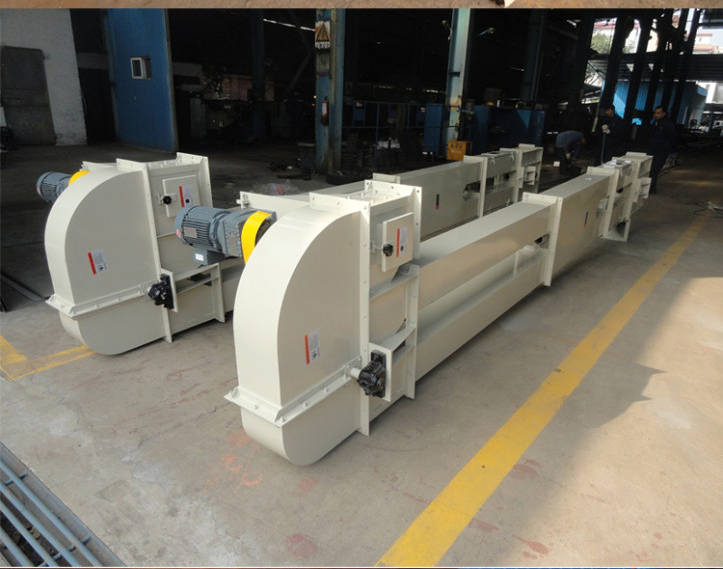
Plastic Bucket Elevator
The hopper is made of plastic, resistant to acid and alkali corrosion, and can be used to transport materials that will deteriorate if in contact with metal materials. The price range is $500.00-$5,900.00
| Hopper material | Food grade polypropylene (PP), polycarbonate (PC) |
| Bucket Selection | 1.8L, 4.0L, and 6.0L |
| Height | ≤50m |
| Capacity | 5~100 t/h |
What is the Plastic Bucket Elevator?
Plastic Bucket Elevator is a device that uses a plastic hopper to vertically lift materials. It can be used to lift bulk materials such as powder, granules, and small pieces in a vertical or inclined direction, such as grain, feed, plastic granules, salt, fertilizer, and pharmaceutical raw materials. The hopper is made of engineering plastics (such as polyethylene and polypropylene) and has strong corrosion resistance and anti-adhesion properties. It is particularly suitable for industries with high hygiene requirements or corrosive substances such as chemicals, food, and medicine. The lifting height can usually reach 50 meters, and the single-machine conveying capacity can reach 100 tons. It has the characteristics of light weight, low noise, and low resistance to contamination of materials.
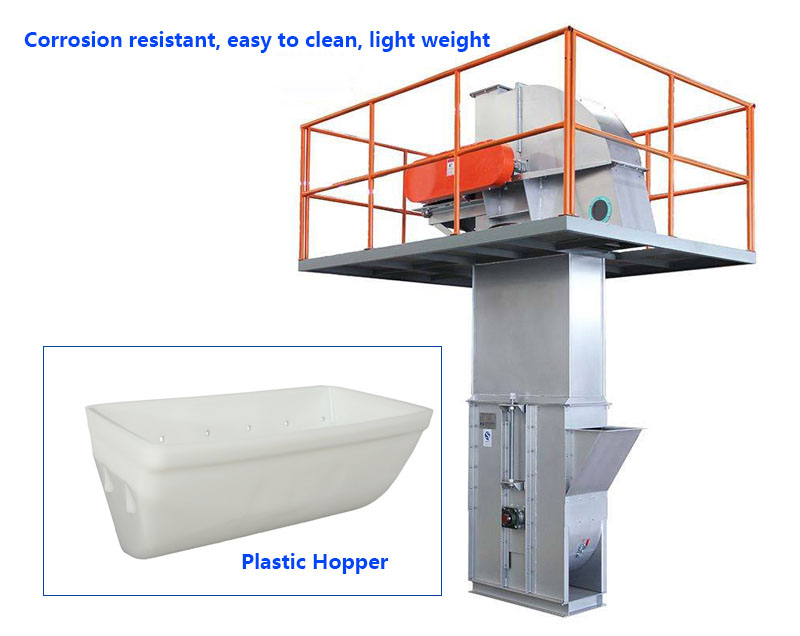
Its structure is similar to that of a traditional vertical bucket elevator, both of which use a bucket for material conveying, but the feeding and unloading methods are changed, and upper and lower horizontal sections (the shortest is 1.5 meters) of the conveying part are added for customer convenience. Horizontal distance conveying reduces the need for customers to purchase other horizontal conveyors again, and on the horizontal section, the plastic bucket elevator can achieve multi-point feeding and unloading, and the number and position of the unloading ports can be determined according to actual needs.
What are the applications of plastic bucket elevator?
Plastic bucket elevator is suitable for vertical conveying of various granular, powdered and small block materials, such as rice, wheat, corn, sugar, salt, milk powder, coffee beans, nuts, frozen vegetables, polyethylene (PE), polypropylene (PP) granules, resins, pigments, additives, powders, granules, capsules, feed, seeds, fertilizers, etc. It is especially suitable for application scenarios with high requirements on material integrity and hygiene, such as food processing and pharmaceutical production.
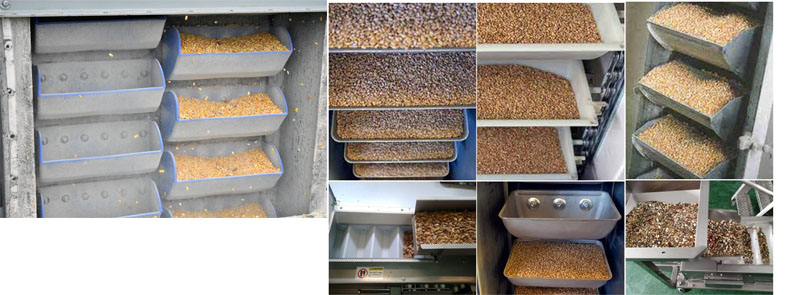
What are the advantages of plastic bucket elevator?
The Plastic Bucket Elevator is a highly efficient vertical material conveying device with outstanding advantages and adaptability to multiple scenarios. Regarding hygiene and safety, its hopper is made of food-grade materials that comply with international health standards, such as the FDA, to prevent contamination of materials during conveying. It is particularly suitable for applications requiring high hygiene standards, such as food and feed. Its lightweight and high-strength plastic material significantly reduces the overall weight of the device, lowering both operating energy consumption and component wear, effectively extending its service life. Its strong corrosion resistance allows for stable conveyance of corrosive materials such as fertilizer and salt, minimizing equipment rust and wear, and significantly reducing subsequent maintenance costs. Furthermore, the plastic bucket elevator produces low friction noise during operation, significantly improving the workshop working environment and meeting the vertical conveying needs of small and medium-sized enterprises for a variety of materials.
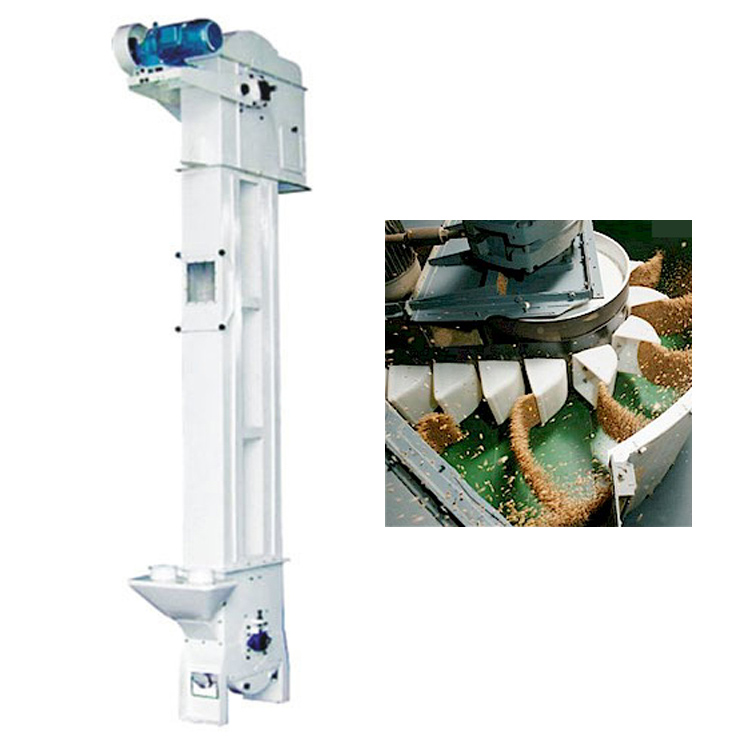
Plastic Bucket Elevator Parameters
| Model | ZD-160 | ZD-250 | ZD-330 | ZD-400 | ZD-500 | ZD-530 | ZD-650 | ZD-800 |
| Capacity(m3/h) | 2.9-4.8 | 4.6-15.7 | 6.0-10.0 | 15.2-25.2 | 25.4-42.3 | 20-33.4 | 32.9-54.9 | 40.6-67.6 |
What are the structures of Plastic Bucket Elevator?
The Plastic Bucket Elevator boasts a simple structure and highly adaptable functionality. Its core component is a plastic hopper—mostly made of food-grade PP or PE, which complies with FDA and other hygiene standards. Its lightweight yet wear-resistant construction prevents metal contamination and reduces the equipment's load. The hopper can be designed as a deep, shallow, or trapezoidal bucket, depending on the material's form, to stably accommodate materials such as granules and powders. The structure also includes a drive unit (motor + reducer, providing power), a transmission assembly (chain or belt, connecting the hopper to achieve a cyclical lift), and an enclosed casing to prevent spillage and dust.

Plastic Bucket Elevator Customer Case
| Customer Type | Application Scenario | Material Lifting | Lifting Height | Lifting Capacity (Hourly) | Equipment Features |
| Small-sized food processing plant in India | Vertical conveying of baking ingredients | Flour and sugar mixture | 5.2 meters | 8 meters | Food-grade PP hopper, FDA-compliant, with dustproof housing |
| Medium-sized feed mill in Pakistan | Broiler feed production line | Pellet feed, premix | 6 meters | 15 meters | High-density polyethylene deep hopper, grease-resistant, self-cleaning base |
| Chemical raw materials company in Vietnam | Corrosive material handling | Industrial salt granules | 8 meters | 10 meters | Anti-aging PE hopper, carbon steel body spray-coated for corrosion protection |
| A grain storage base in China | Corn storage and hoisting | Dry corn granules | 10 meters | 20 meters | Food-grade PP shallow hopper, low-residue design, equipped with a deviation alarm |
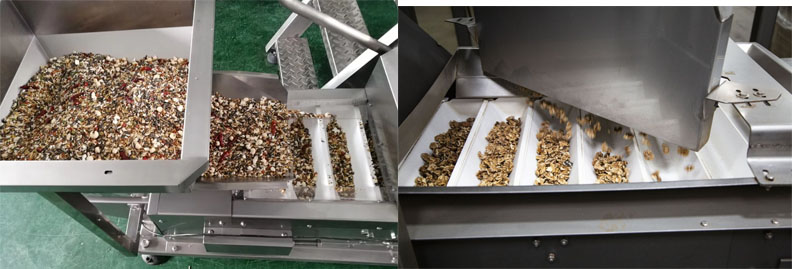
What are the advantages and disadvantages of a plastic bucket elevator compared to a metal elevator?
A plastic bucket elevator is a continuous conveying device primarily used for vertically conveying powdered, granular, and small bulk materials. Its main components, such as the bucket, head cover, and barrel, are made of engineering plastics (such as polyethylene (PE), polypropylene (PP), and nylon (PA).
Advantages:
Corrosion Resistance: Ideal for conveying materials that are acidic, alkaline, corrosive to salt spray, or chemically active (such as fertilizers, salt, food ingredients, and chemical powders).
Lightweight: Easy to install and maintain, requiring minimal structural load on the plant.
Anti-Stick: The plastic surface is smooth and resists adhesion, ensuring clean discharge, making it particularly suitable for wet and sticky materials.
Abrasion Resistance: Certain engineering plastics (such as nylon) exhibit excellent abrasion resistance.
Food-Grade Safety: Elevators made of food-grade plastic can be used in the food and pharmaceutical industries and meet hygienic requirements.
Disadvantages:
Low Strength and Temperature Resistance: Compared to metal, it has lower strength and impact resistance, and is not resistant to high temperatures (generally operating temperatures do not exceed 80°C).
Potentially Higher Cost: High-performance engineering plastics can cost more than ordinary carbon steel.
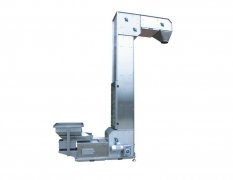
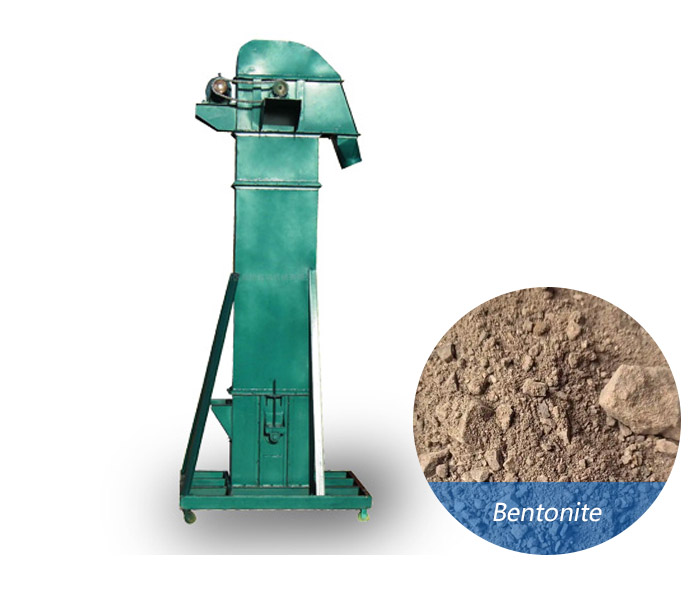
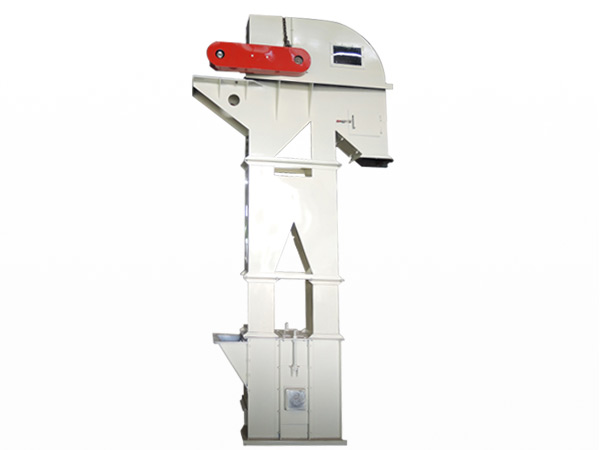 Sugar Bucket Elevator
Sugar Bucket Elevator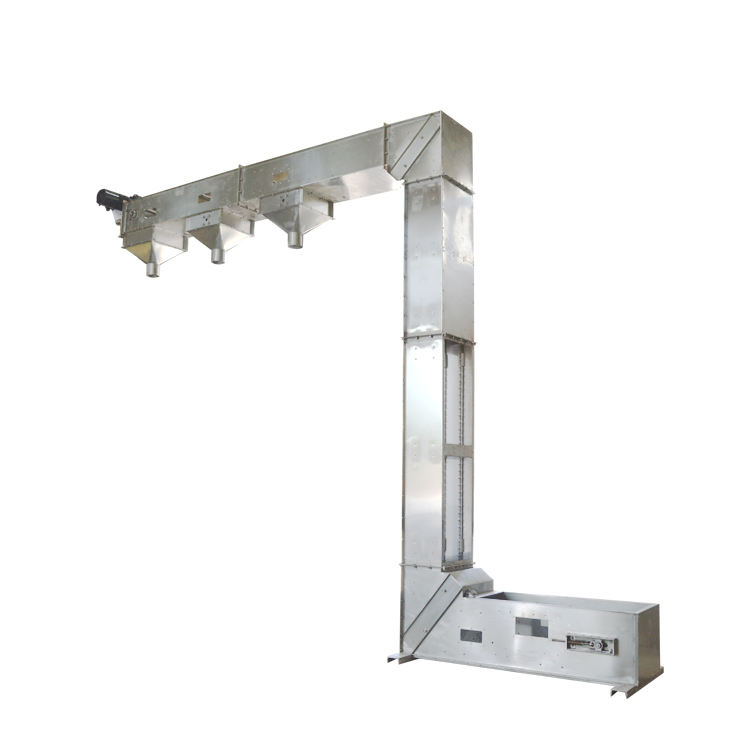 Food Grade Bucket Elevator
Food Grade Bucket Elevator